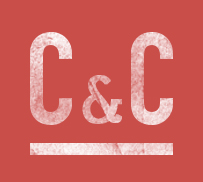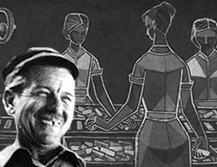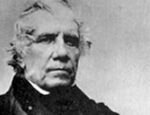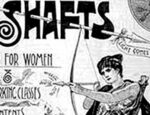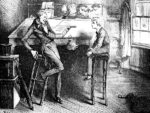Description
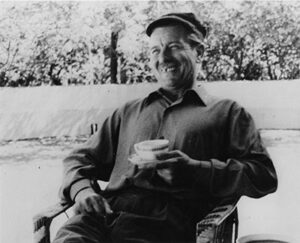 Appreciate the beauty of the “Three Graces” (colour) by Cliff Rowe (1904-1989), a British painter whose mission was to put working people at the centre of the visual arts. A working-class boy from Wimbledon, he left school at fourteen and managed to get into the Wimbledon Art School. Five years later he was working as a commercial illustrator, but the economic crisis and the growing threat of Fascism persuaded him to join the Communist Party.
Appreciate the beauty of the “Three Graces” (colour) by Cliff Rowe (1904-1989), a British painter whose mission was to put working people at the centre of the visual arts. A working-class boy from Wimbledon, he left school at fourteen and managed to get into the Wimbledon Art School. Five years later he was working as a commercial illustrator, but the economic crisis and the growing threat of Fascism persuaded him to join the Communist Party.
After eighteen months in Russia absorbing Soviet innovations in design, he returned to England and set up the Artists’ International Association. This organization, at its height with a membership of nearly a thousand, aided German refugees and sent medical assistance to the British International Brigade during the Spanish Civil War.
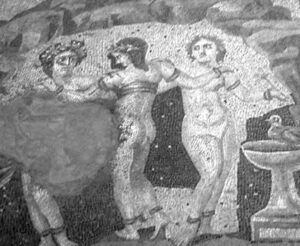 Most of Rowe’s paintings lend beauty and grandeur to scenes of people working in industry, for example “Woman cleaning a loco boiler.” But in “Three Graces,” much of the power of the image derives from Rowe’s recasting of three woman working at a factory conveyor belt in the unmistakable postures of the three Graces—the one in the centre with her back to the viewer. This design concept goes all the way back to antiquity, and features in a famous mural at Pompeii and mosaic in the Shahba Museum, Syria.
Most of Rowe’s paintings lend beauty and grandeur to scenes of people working in industry, for example “Woman cleaning a loco boiler.” But in “Three Graces,” much of the power of the image derives from Rowe’s recasting of three woman working at a factory conveyor belt in the unmistakable postures of the three Graces—the one in the centre with her back to the viewer. This design concept goes all the way back to antiquity, and features in a famous mural at Pompeii and mosaic in the Shahba Museum, Syria.
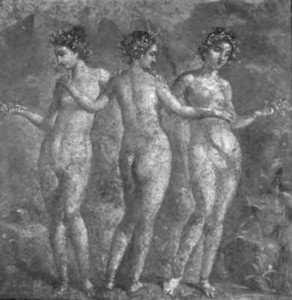 This arrangement of a beautiful trio of women is recurrent in western art from at least as early as Botticelli’s Primavera (1486); its most famous instantiation is probably in Canova’s neoclassical statue group of around 1816. But the very idea that such a vision of classical perfection could be located in an industrial setting with low-income women in the roles of Grecian goddesses, calmly in control of the complicated machinery they are operating, illustrates the profundity of Rowe’s revolutionary political aesthetic.
This arrangement of a beautiful trio of women is recurrent in western art from at least as early as Botticelli’s Primavera (1486); its most famous instantiation is probably in Canova’s neoclassical statue group of around 1816. But the very idea that such a vision of classical perfection could be located in an industrial setting with low-income women in the roles of Grecian goddesses, calmly in control of the complicated machinery they are operating, illustrates the profundity of Rowe’s revolutionary political aesthetic.
n.b. around 1940
